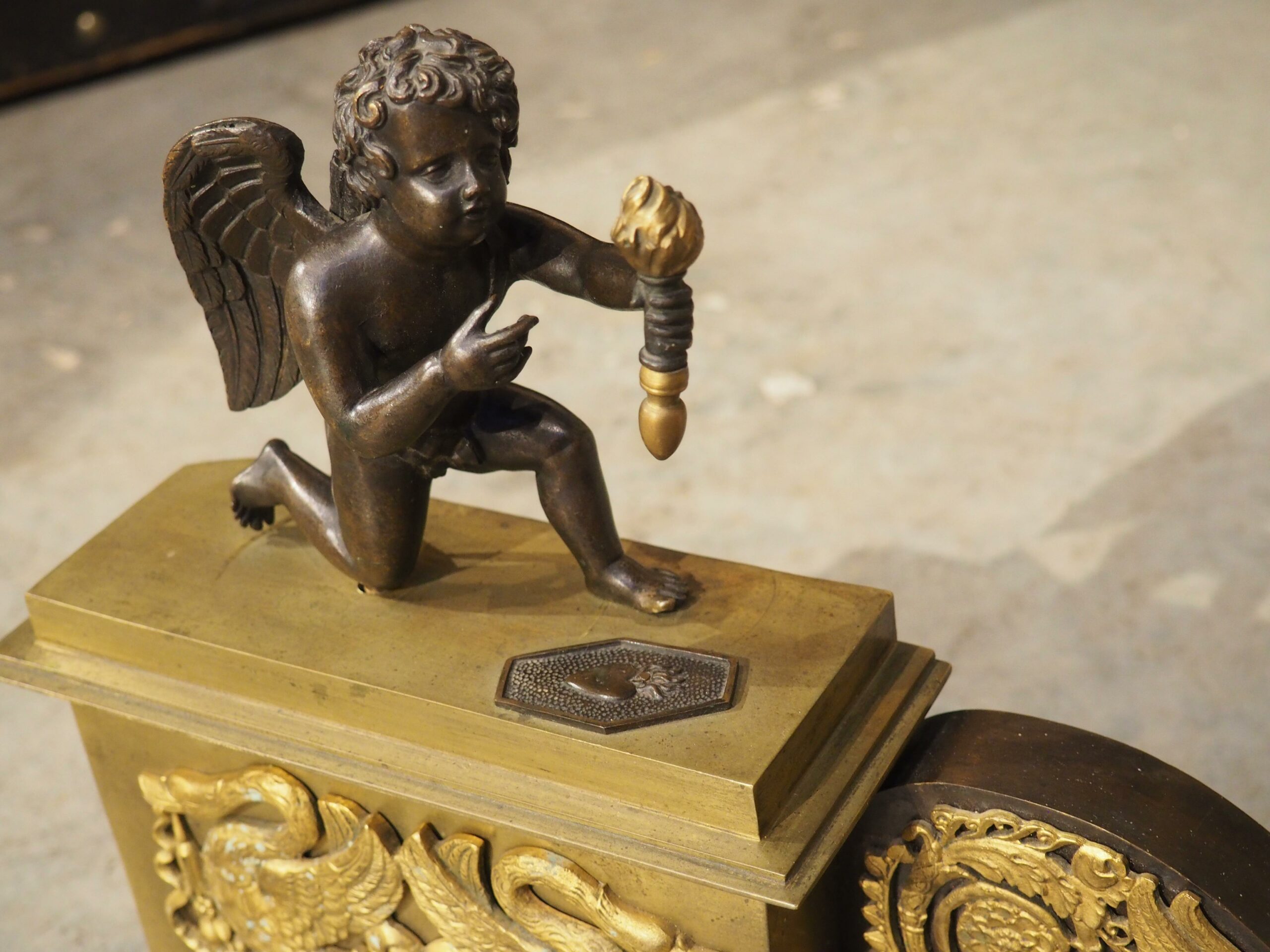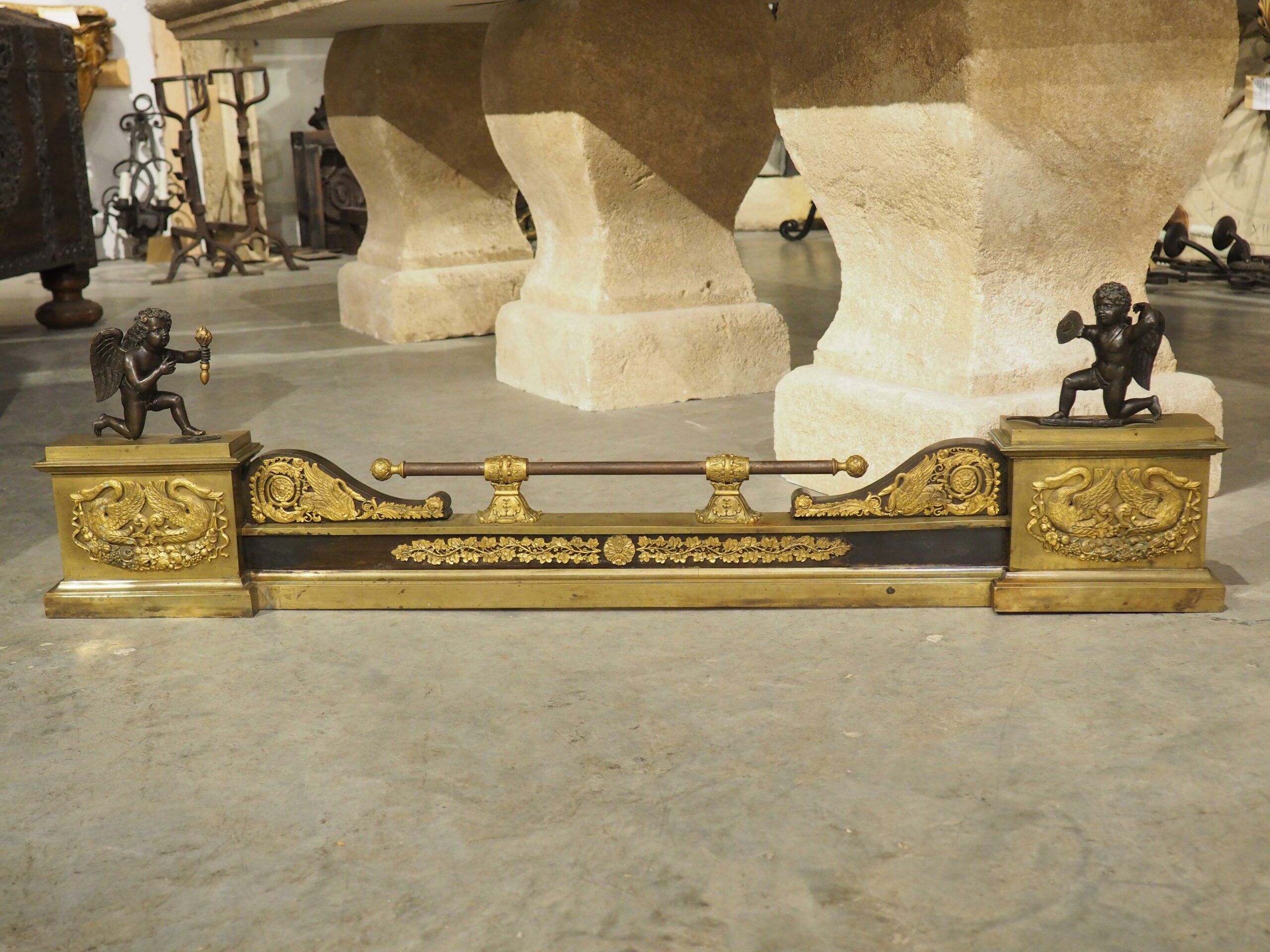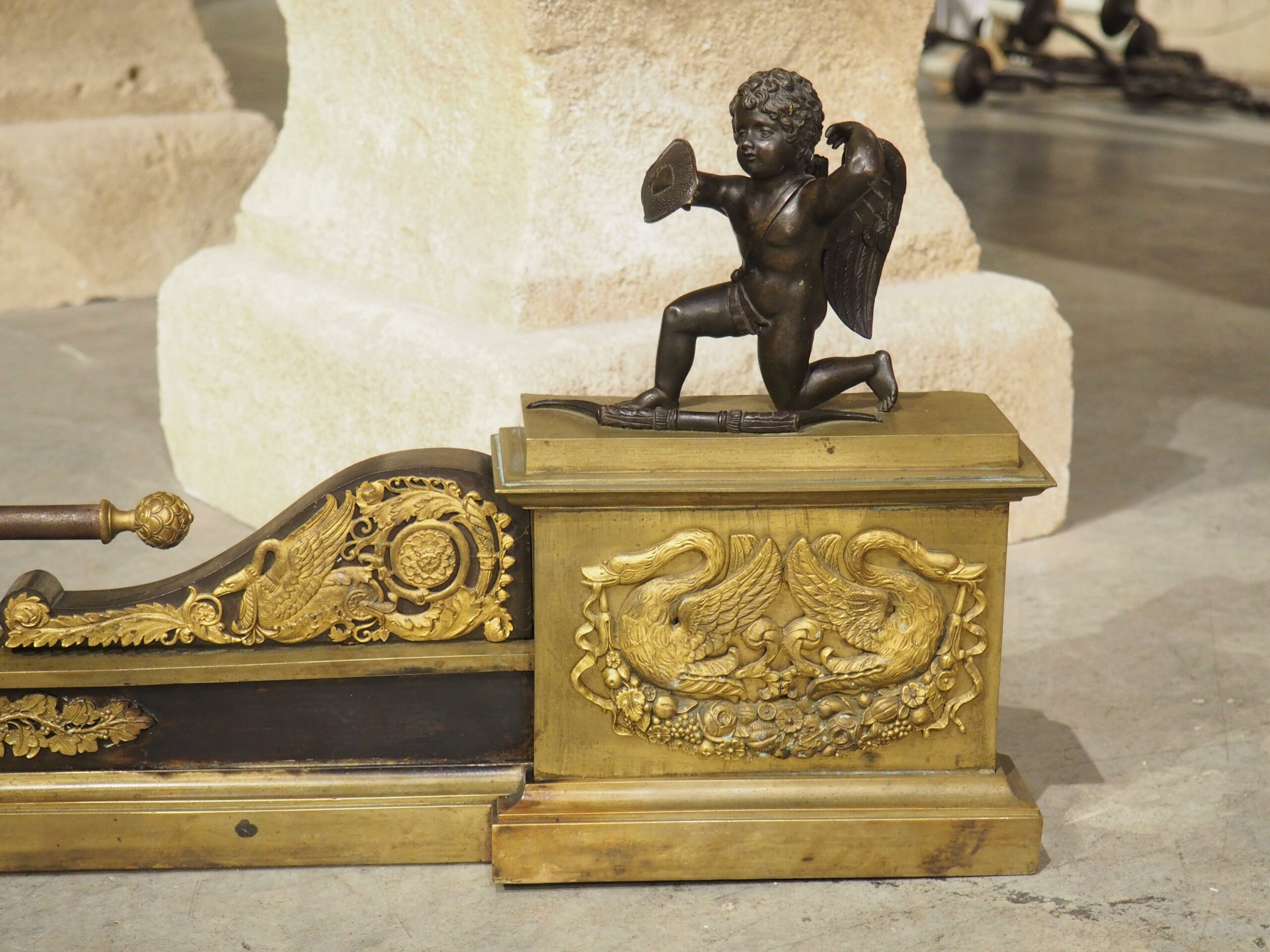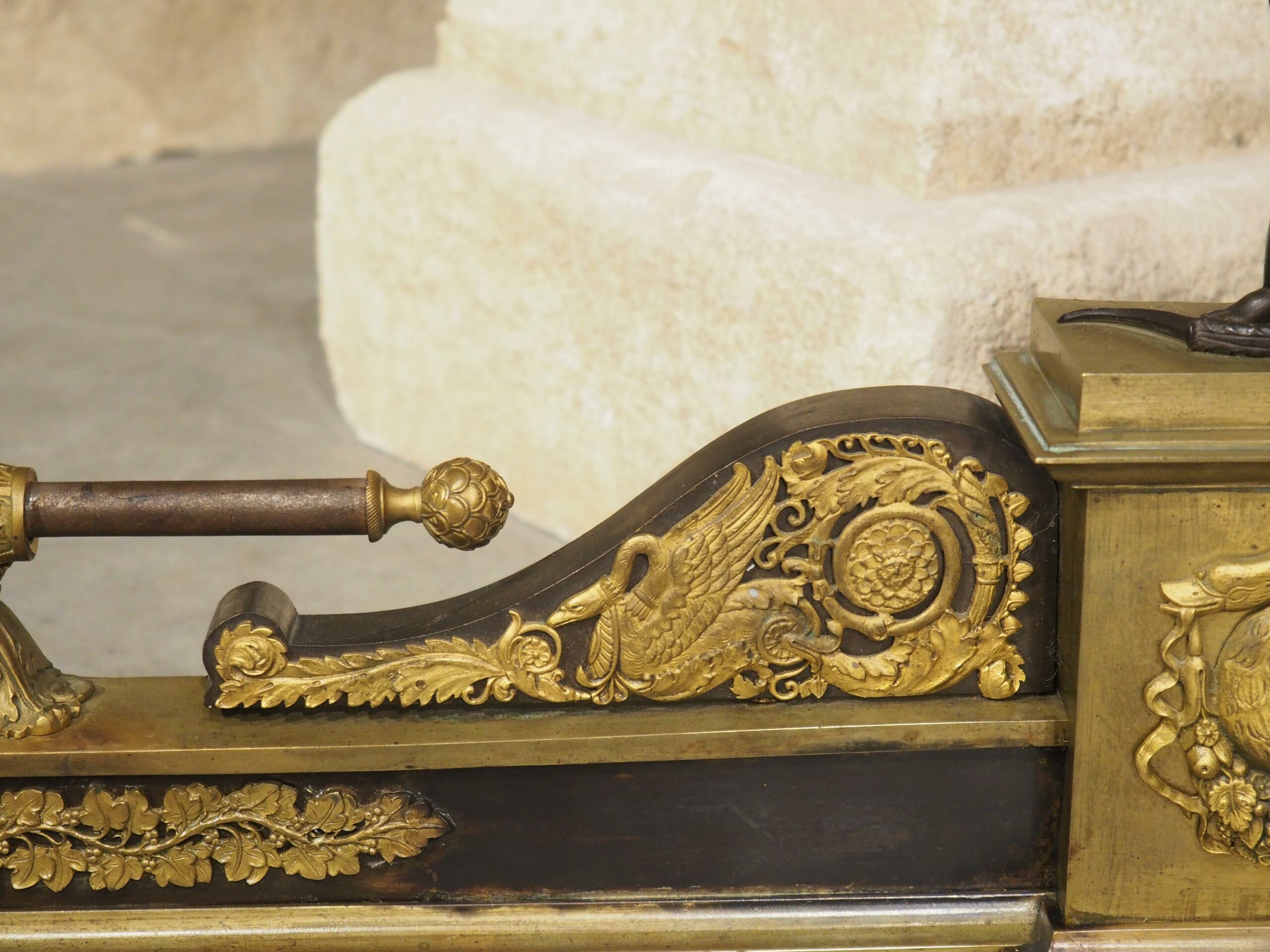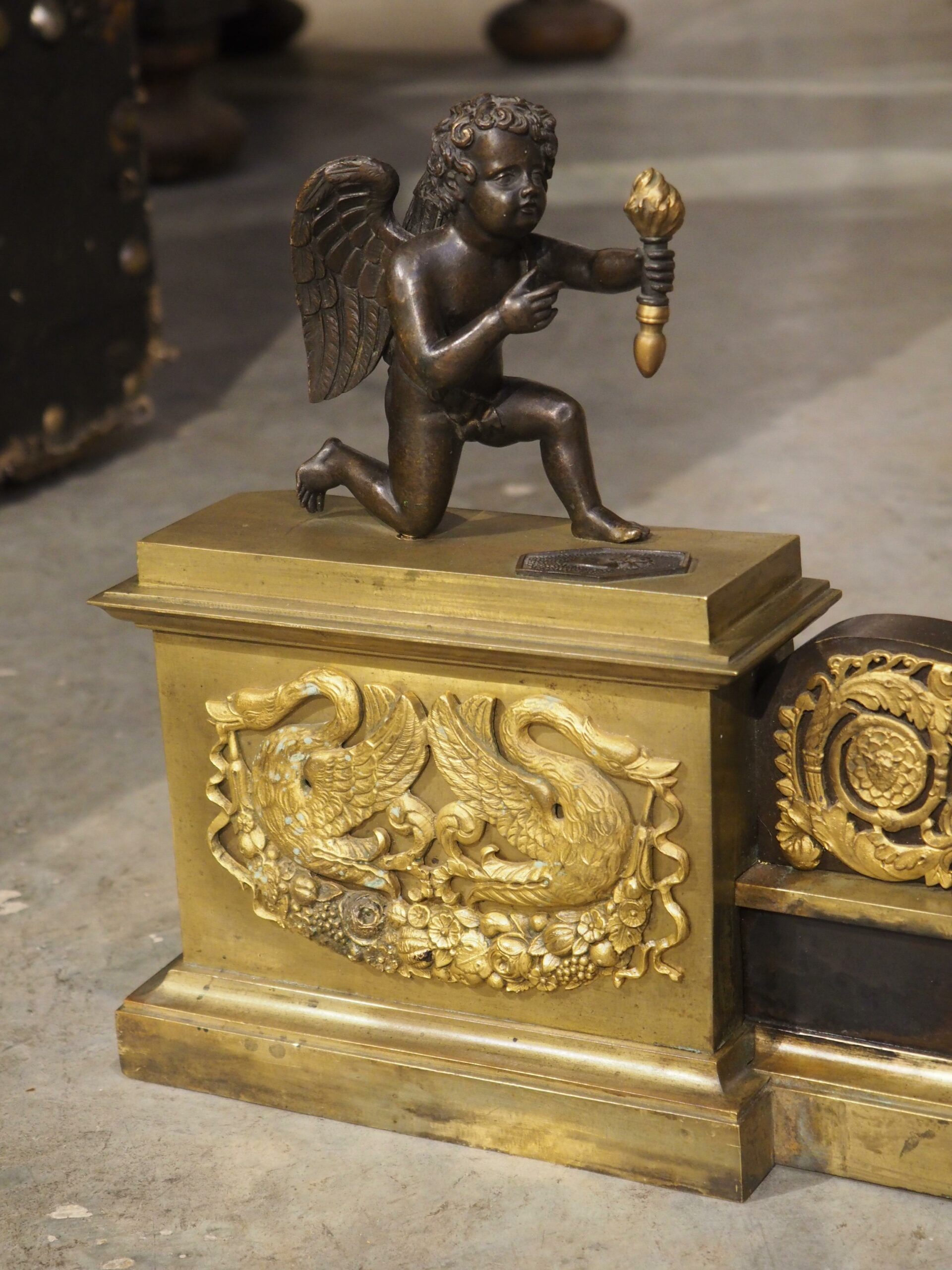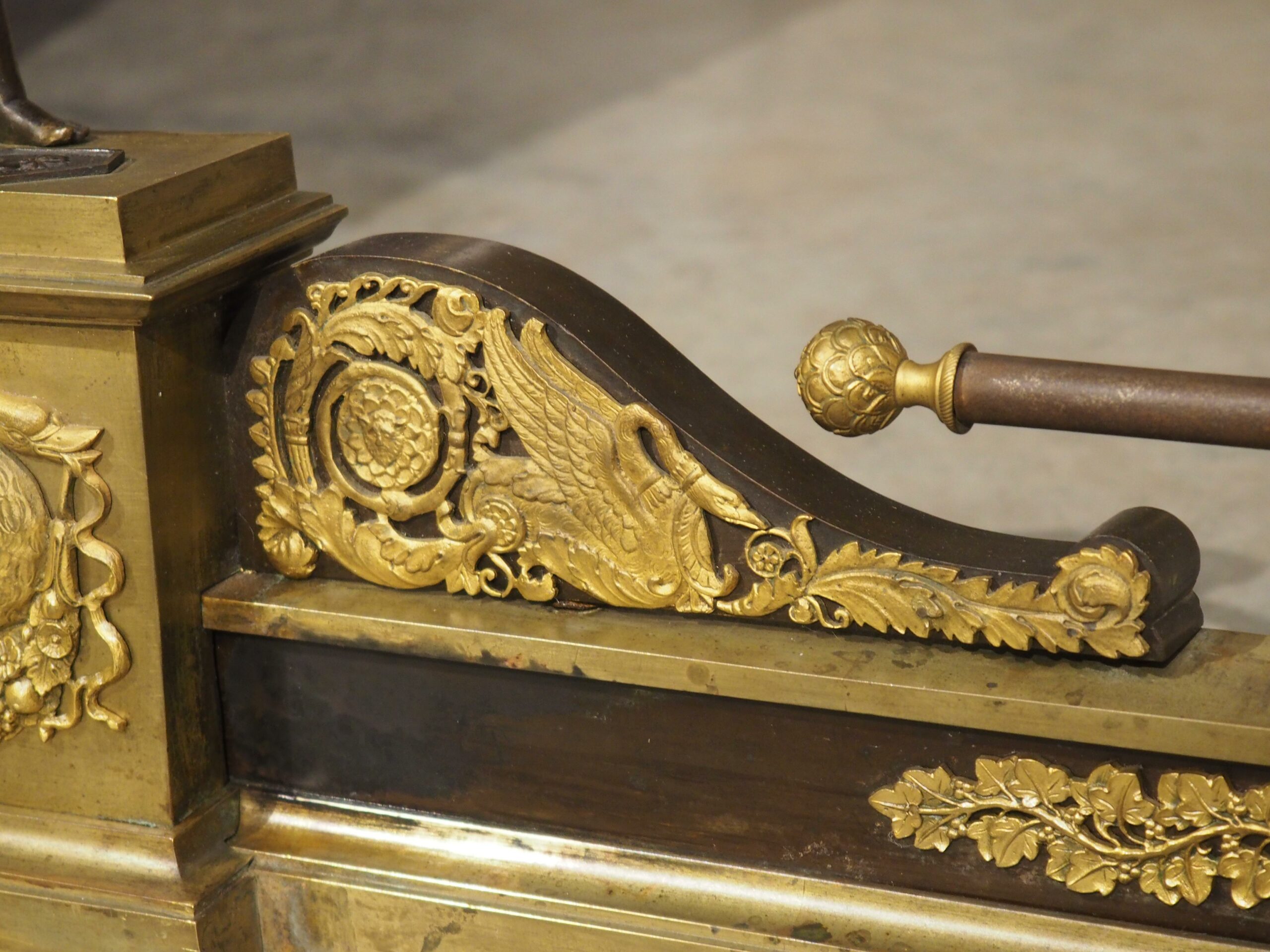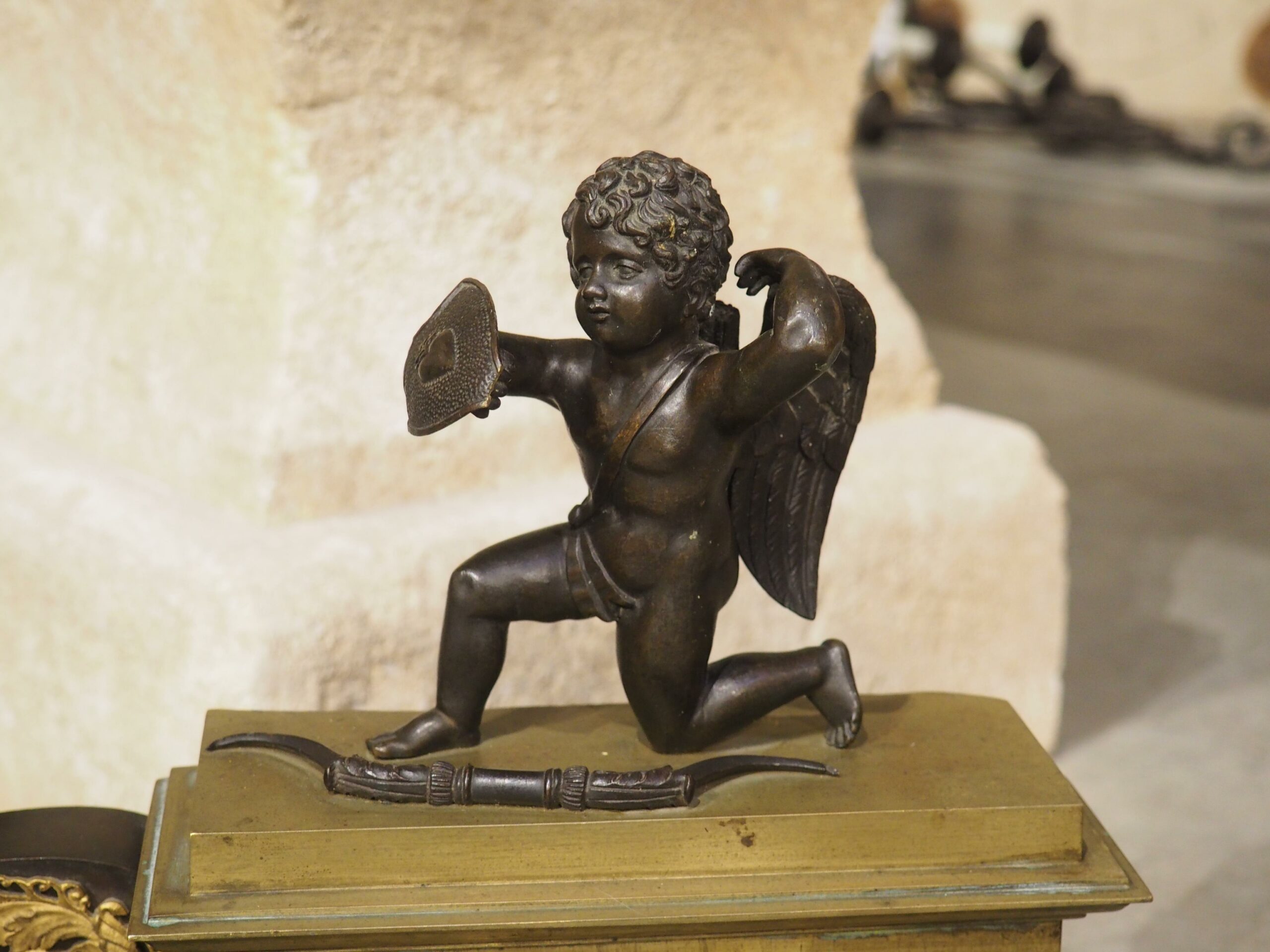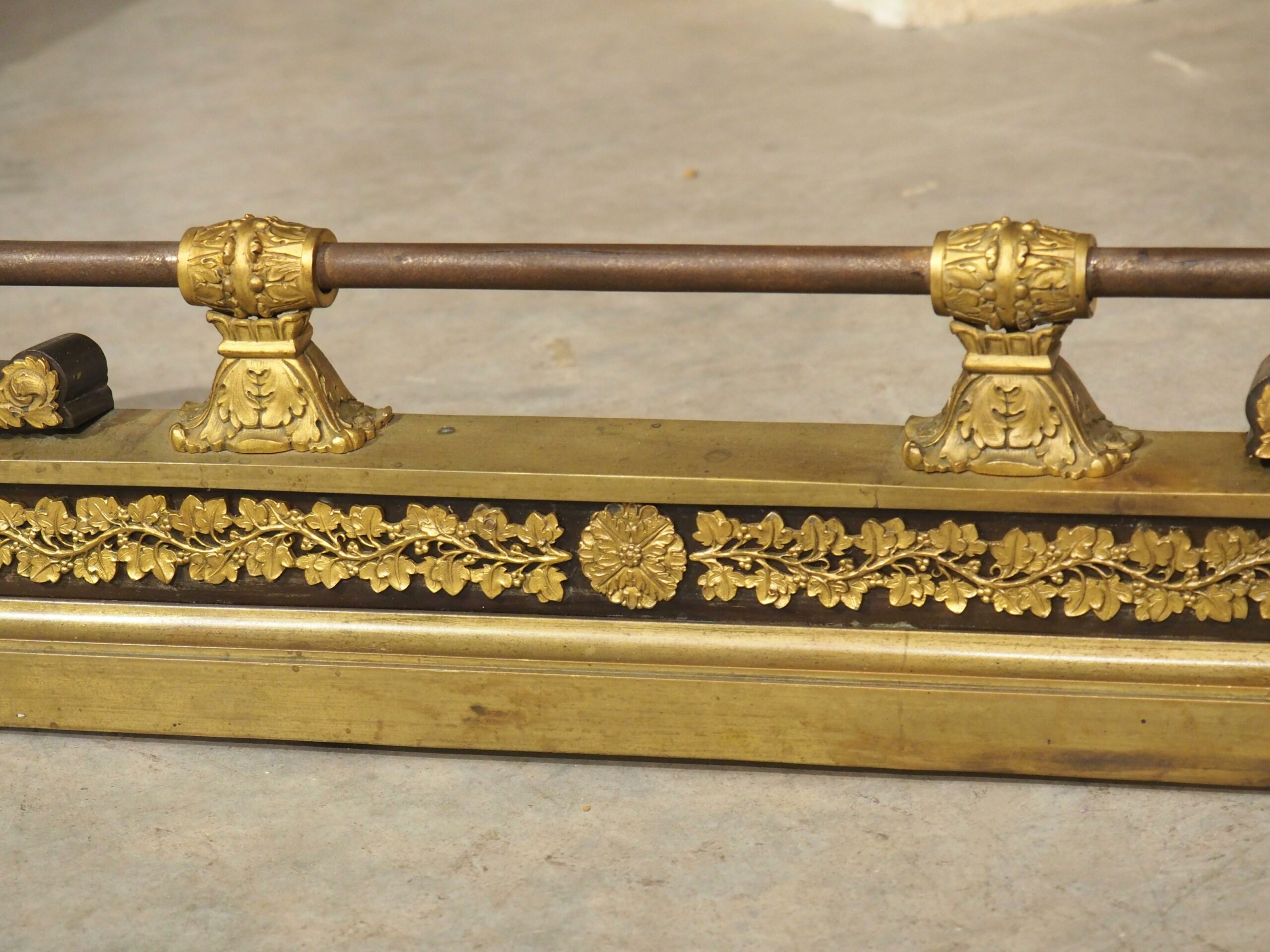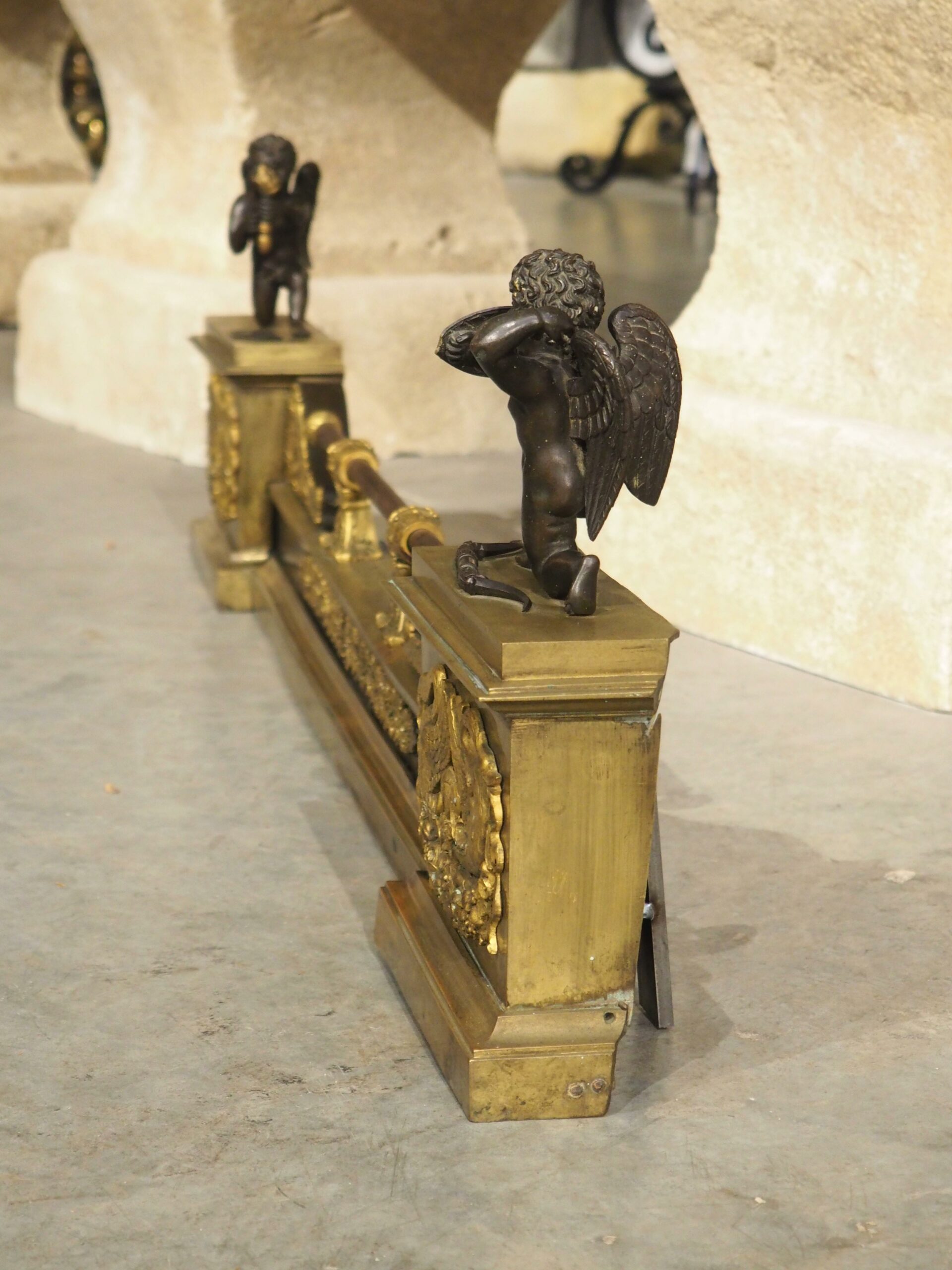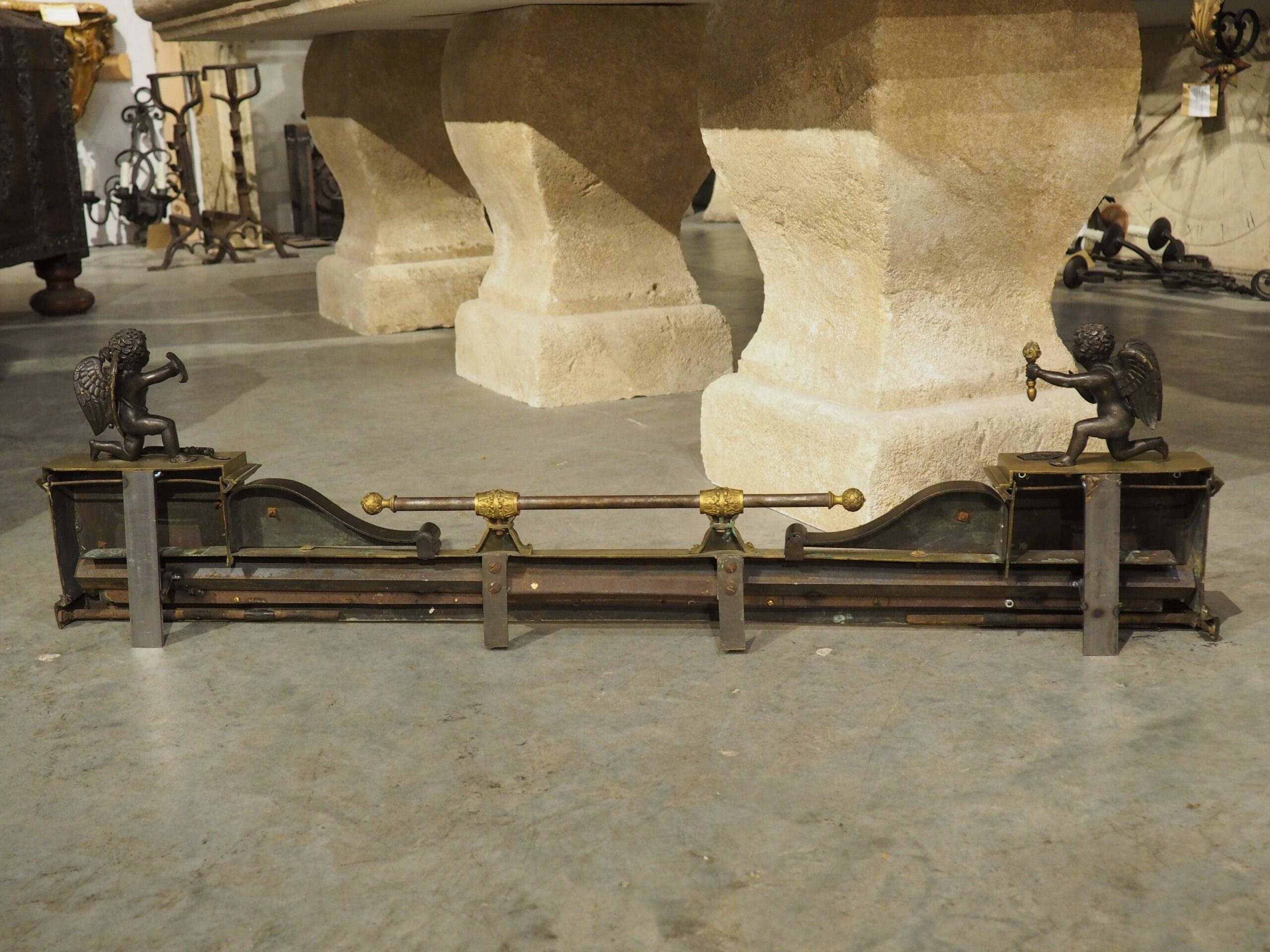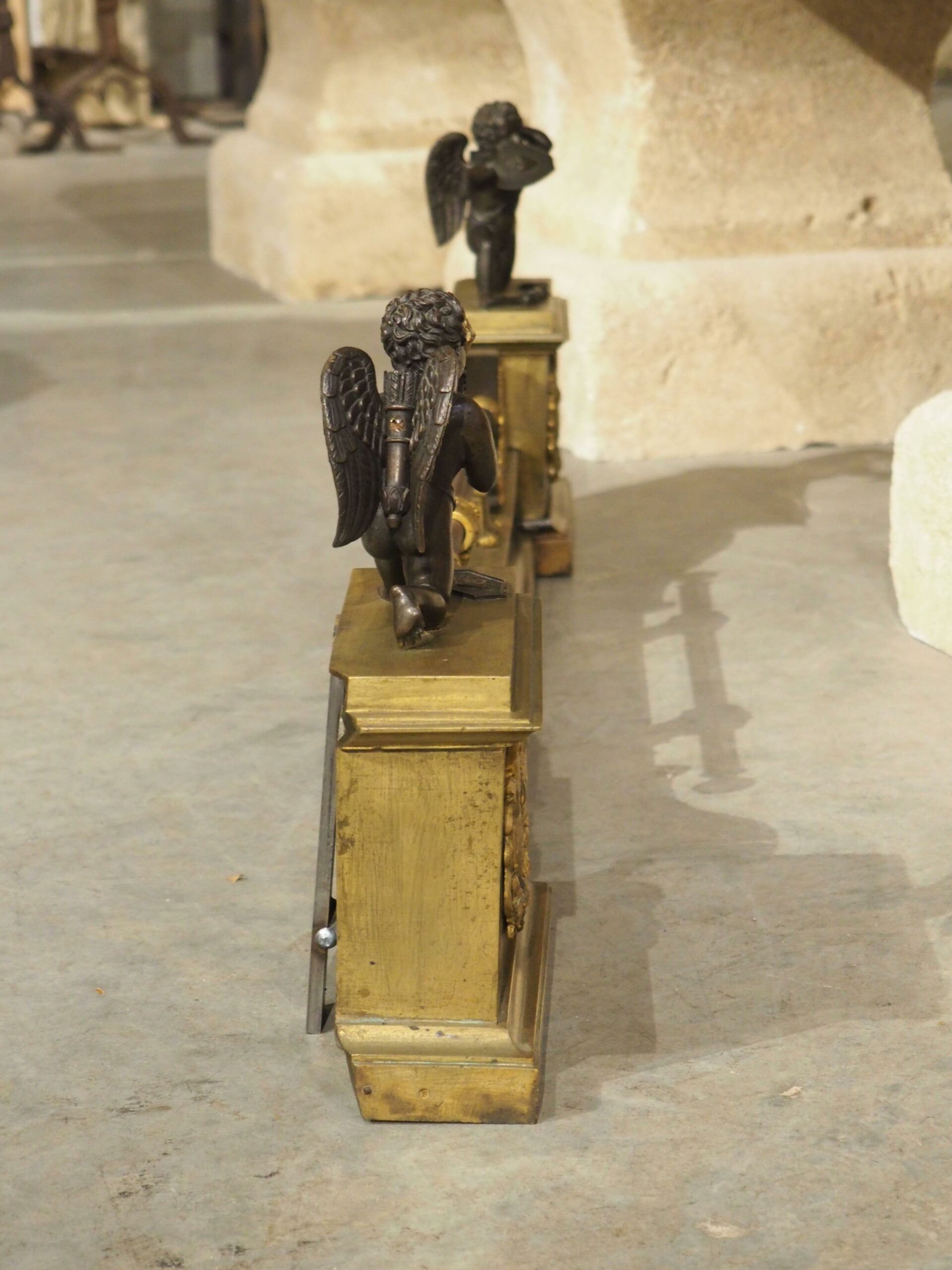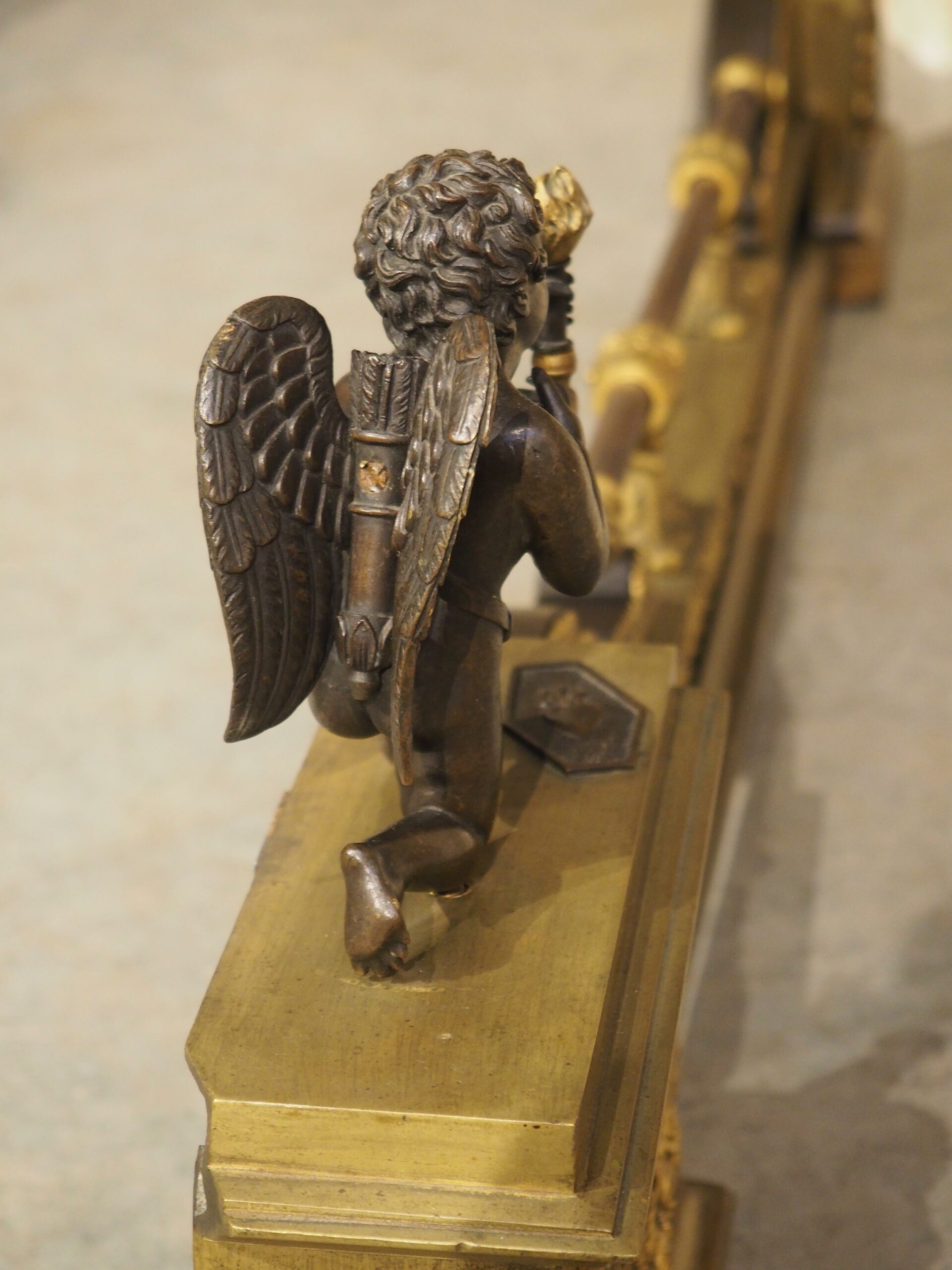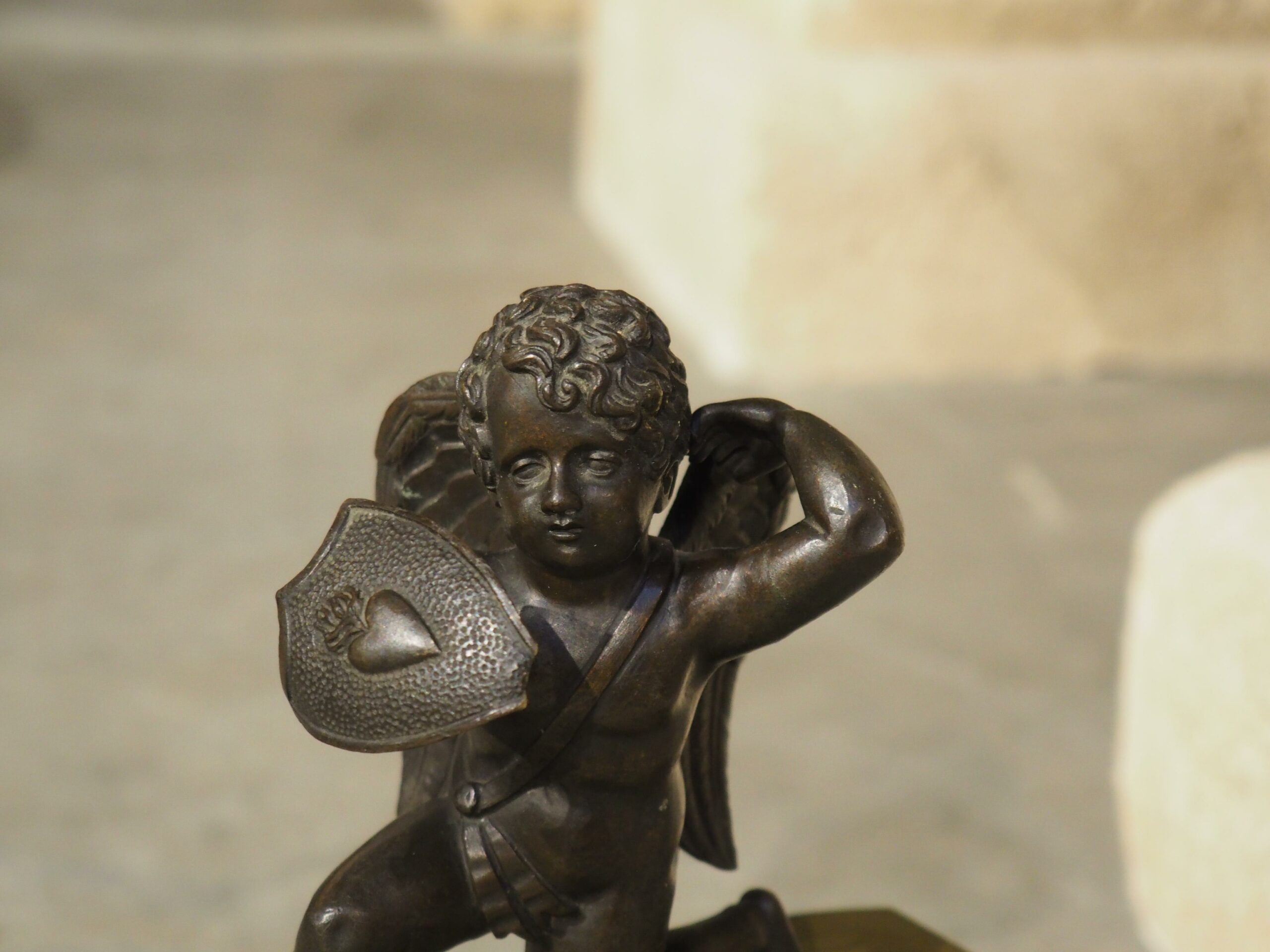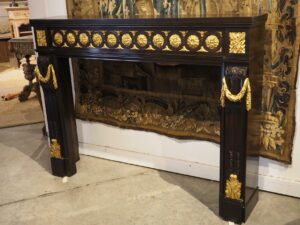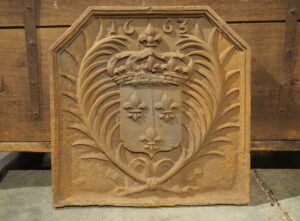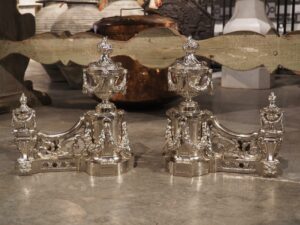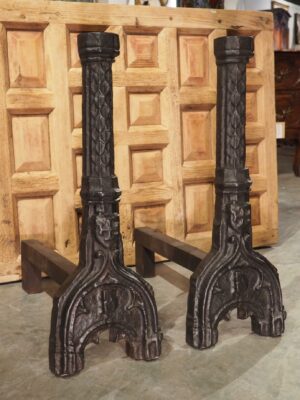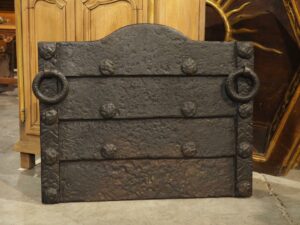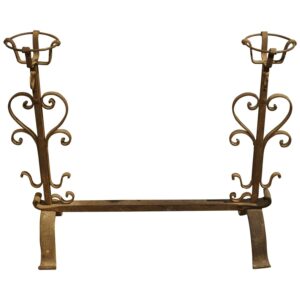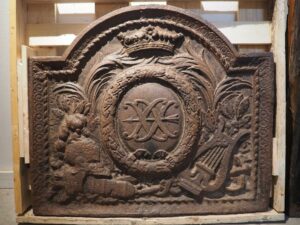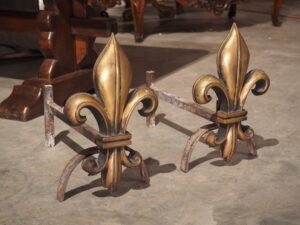The era of history known as the Empire period coincided with the reign of Napoleon over France. It was considered the second phase of Neoclassicism, as Napoleon believed that his only peers were rulers of ancient civilizations (Caesar, Alexander the Great, etc.) and that furnishings should be adorned with images representing their dynasties. This patinated and gilt bronze fireplace fender dates to the end of the Empire period, circa 1815, and features iconography associated with Greek and Roman mythology.
A pair of distinguished cherubs kneels atop a highly stepped gilt entablature on each end; these winged figures, which have a dark brown patination, represent Cupid, as one holds a flaming heart, while the other is equipped with a quiver of arrows and his bow at his feet. Beneath each capital (also gilded) is a pedestal embellished with a pair of swans holding the ribbon ends of a floral swag that drops beneath their stylized foliate tails. Two more gold swans can be seen gracing a pair of S-scrolls that run along the top of the transom, connecting the two pedestal ends. These birds have more elaborate foliate tails, with a huge rinceau enveloping a lion mascaron central whorl and a leafy margent tied around their necks. In between these two beautiful scrolls is a cylindrical rod with pinecone terminals that is elevated above the transom by two rising leaf cups. The front of the transom has a golden central floret flanked by two foliate margents. Fenders, such as our Empire gilt bronze example, have been used for centuries, designed not only to decorate the fireplace opening, but to help prevent logs from spilling out into the room.
CONDITION: Good antique condition with minor rubs and buildup (see photos). Areas of discoloration commensurate with use in a fireplace. Light loss of gilding and a minute chip to the shield. Metal supports have been added to the back more recently to strengthen the fender.




